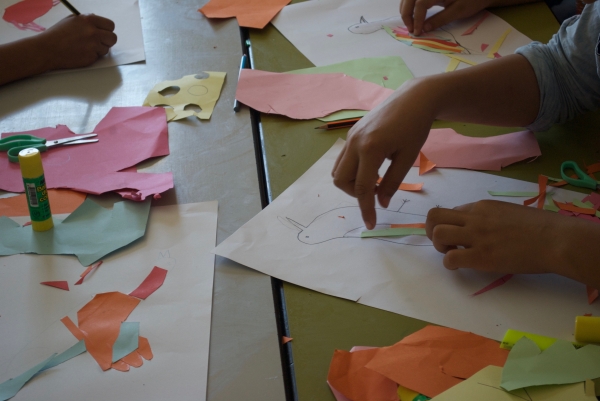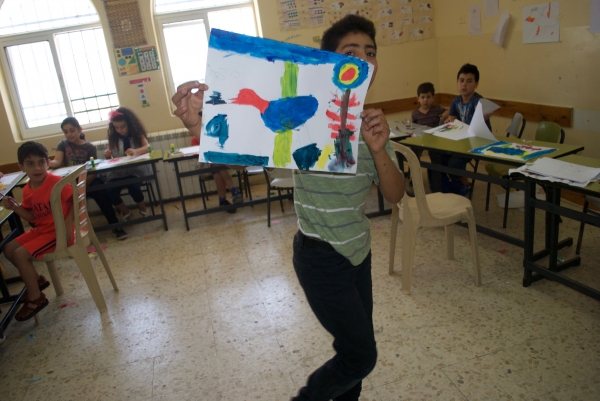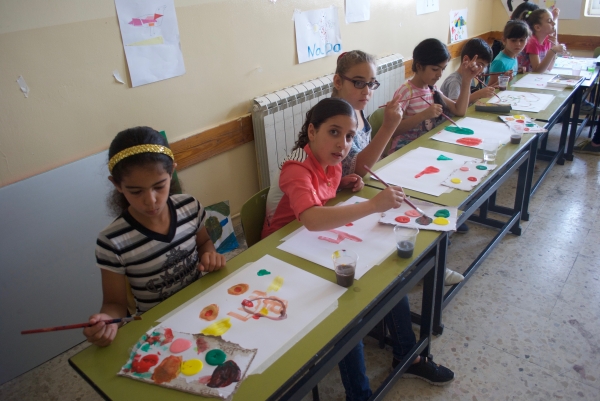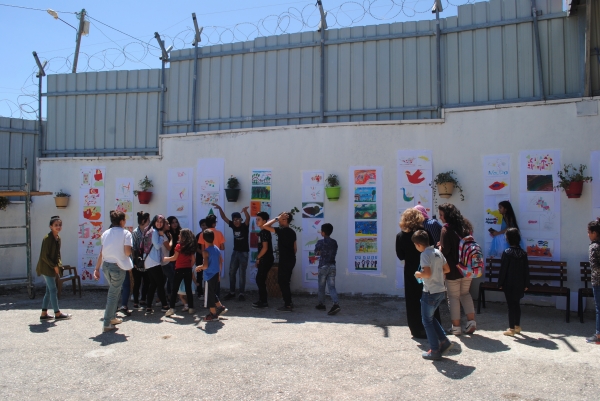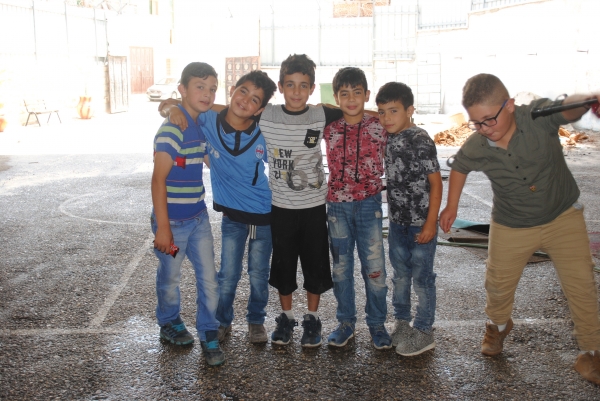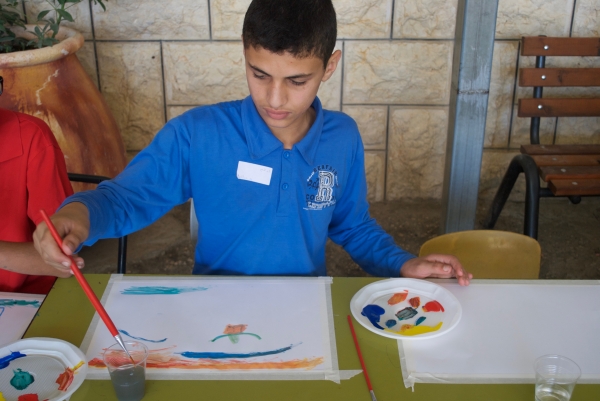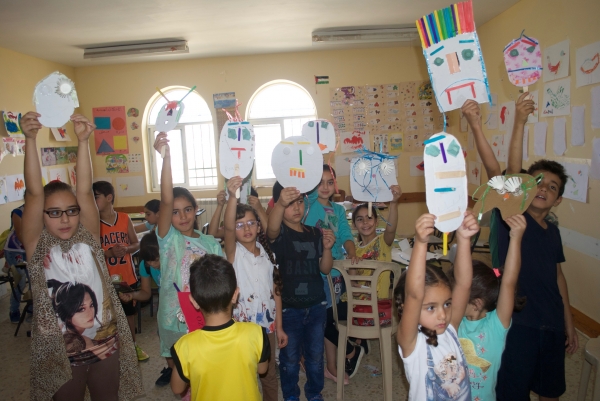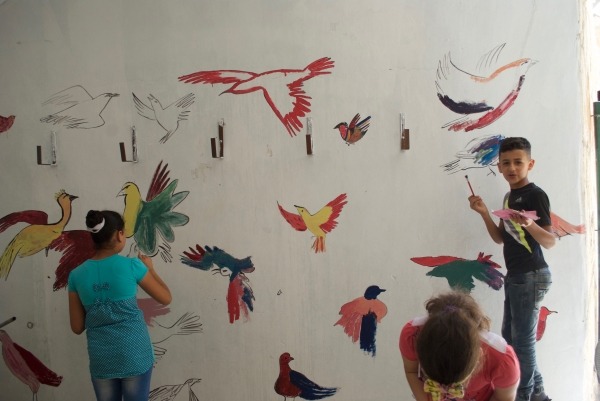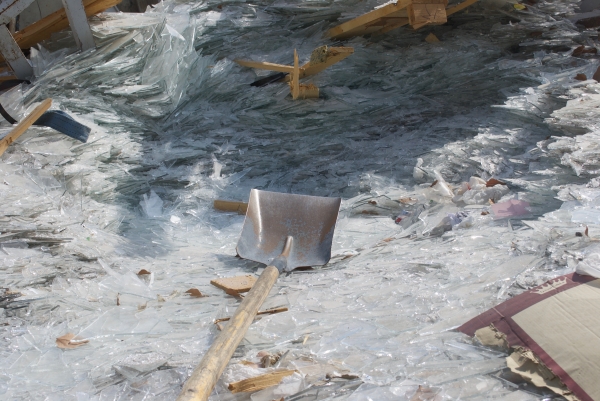How did this grant contribute to the realization of your project in regard to artistic exchange, local cultural development and/or the promotion of cultural diversity?
This scholarship gave me the ability to carry out stage 1 of Samak Bilab Bi Delo which is a social enterprise focusing on localised artistic workshops for women and children and using this to develop works of art and design to feed back into the community. It enabled me to travel to a remote Palestinian village near Hebron to take part in and facilitate a children’s arts summer camp for 70 children aged 6-14. Alongside this it also gave me the opportunity to spend two immersive weeks within a Palestinian town and develop strong and personal relationships with the women and children of the town. I, Julie Fox and Elinor Stanley were able to use our collection of skills and experience in design, fashion, drawing, painting, sculpting and performance art to encourage participants to channel their tensions through artistic practices, giving them a chance to escape but also explore. In doing this they also provided us with unique works we can now use as the basis of our artistic and design reaction in collaboration with artisans in the area. We were staying with the founder of the Beit Ummar women's centre Muna Ammar and in doing so had the opportunity to build a strong relationship with her and her husband Ibrahim Ibraigheth, who is the recently appointed director of ActionAid Palestine. We began extensive discussions on how we can support and contribute to the women’s centre in its development, including artistic and collaborative workshops within the centre, which have the potential to generate income, and the development of walking trails in the area with support from Masir Ibrahim which will also open up the area to local and international visitors to the town again generating and income for hosts, artisans and guides. For the development of the walks and to put Beit Ummar on the map as a point of historical and cultural interest I had organised a meeting for Muna and me with representatives from Masir Ibrahim for advice and support of progressing this venture. From this meeting amongst other things we managed to secure training courses for women of Beit Ummar to become qualified guides, and arranged group walks for women supported by Masir Ibrahim. I believe this development will support the potential for people internationally to be encouraged to visit this area of the West Bank and engage in a similar experience to our own, immersed in Palestinian culture whilst exchanging elements of their own. From the money we raised on crowdfunder we managed to employ a manager, organizer and 5 volunteers, all of whom were women from Beit Ummar. This is a positive movement for working women in the village and an example to girls in the camp that through engaging in these activities they can aspire to have a paid job within a creative/administrative career.
How does exchange, networking and international contacts contribute to the development of your artistic and cultural project?
The question of exchange is very sensitive. It was very important to us not to present ourselves as being ‘experts’ or more culturally competent than the people we were engaging with, which I feel can be the theme for internationals working with artisans from countries that are at different stages of development or in need of support. Whilst in Beit Ummar we engaged with Muna’s networks within the town, the summer camp networks she had set up for us, and the women’s embroidery networks. Within these we developed ways of collaborating, working on each others strengths and creative exploration to grow an artistic and design process that kept us on the same level. I exchanged my contacts within Masir Ibrahim as well as exchanging our experiences and knowledge within the arts. As a group, Julie Fox, Elinor Stanley and myself pulled these many networks together to begin to gather a creative network that could support different ventures. I created the international part, connections with Masir Ibrahim, the Abraham path and the potential of connecting with London art galleries to exhibit the work produced, looking towards this in 2018.
Can you elaborate on the learning and knowledge you have gained and shared throughout this experience?
During the classes we noticed themes, such as, Palestinian flags and boats a theme in children's work. They also had very little if any knowledge of the contemporary palestinian artists we endeavored to use as examples within our classes. You could observe a sense of pride in them when they realised the works they were taking inspiration from were representations of their land by their people. The classes we taught begin to show the children what is available to them and give them a wider understanding of different ways of seeing. Many young boys from Beit Ummar have been sent to jail by the Israeli authorities, some from as young at 12 years old. Learning this we realized how important work like ours could be here, to distract these older children at a time when lack of activities and outlets for their frustration could end up with a short childhood. The classes we will start now and the ones we will develop for the camp in the following year will aim to focus more on ages 11-14. Whilst walking through Beit Ummar you can’t help noticing the amount of waste left on the streets. This garbage could provide a creative resource in future camps, which also have beneficial environmental effects, allowing the feeling of empowerment. For example, melting down metals to create furniture, using old plastics to create sculptures or instruments etc. In regards to the future of this project we now have greater awareness of the many checkpoints involved in moving pieces we make. It would be interesting to plot these whilst producing garments as a part of the story, integrating this task as part of the work. On walks with Muna, we found a spring, and saw how we could set up a path network here with themes of storytelling, talks, folk singing, sculpture and other arts within the hiking plans with Masir Ibrahim. Finally spending time in the homes of the women who worked for the camp was quite shocking to us. Women from Beit Ummar are encouraged to work, have a profession and bring an income but household responsibilities still aren’t shared, we were in awe of these women who never seemed to stop, their stamina was inspiring though you could see their fatigue combined with the passion in their expressions.
Please indicate a link to your current work (website/facebook page)
Currently working as a freelance pattern cutter and design assistant for London designers including Art School London and Sadie Williams. My website is http://elizacollin.co.uk/ Link to Samak instagram - http://elizacollin.co.uk/
